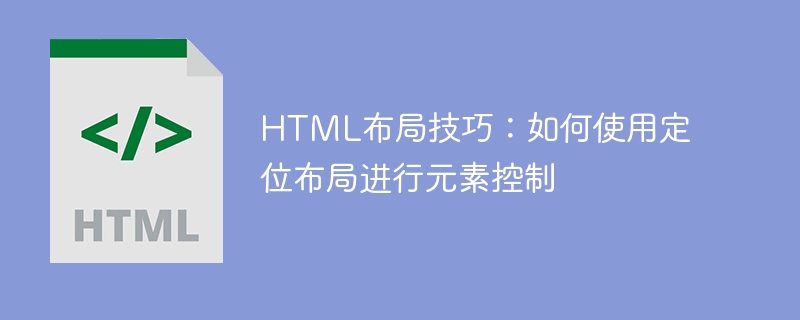

HTML layout skills: How to use positioning layout for element control
Introduction:
In web design and development, layout is a very important part. HTML and CSS provide a variety of layout methods, among which positioning layout is one of the most commonly used. Positioning layout allows us to precisely control the position and size of elements on a web page. This article will introduce how to use positioning layout for element control and provide specific code examples.
1. CSS positioning attributes
Before we begin, we must first understand the positioning attributes in CSS. CSS provides three positioning attributes, namely: relative positioning (relative), absolute positioning (absolute) and fixed positioning (fixed).
2. Use relative positioning to achieve element control
Relative positioning is often used to fine-tune the position of elements, such as moving elements up or down a certain distance. The following is a code example:
In the above example, we set relative positioning for the div element, and then offset it by 50px to the right and down by modifying the left and top attributes. In this way, we achieve fine-tuning of the element's position.
3. Use absolute positioning to achieve element control
Absolute positioning is very suitable for creating unique and flexible layouts. Here is a code example using absolute positioning:
In the above example, we created a relatively positioned box and placed an absolutely positioned element inside it. By setting the top and right properties, we can place an absolutely positioned element in the upper right corner of the box.
4. Use fixed positioning to achieve element control
Fixed positioning is often used to create effects such as ceiling menus and floating advertisements. The following is a code example using fixed positioning:
In the above example, we used fixed positioning to create a ceiling menu effect. Make the menu fixed to the top of the page by setting the top attribute to 0.
Conclusion:
Through the above code examples, we have learned how to use positioning layout for element control. Relative positioning, absolute positioning and fixed positioning are all very useful layout techniques that can help us flexibly control the position and size of elements. I hope this article will be helpful to your learning and practice in HTML layout. Remember to practice and try a lot to master these techniques and create better web page layouts.
The above is the detailed content of HTML layout tips: How to use positioning layout for element control. For more information, please follow other related articles on the PHP Chinese website!




